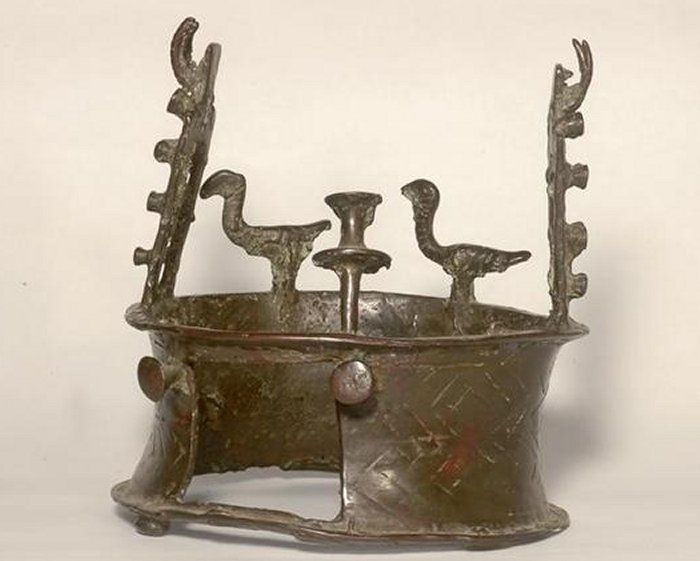Nahal Mishmar Secrets: Priceless Artifacts In Cliff Cave Overlooking The Dead Sea
A. Sutherland - AncientPages.com - In 1961, the oldest known crown was discovered in the vicinity of Nahal Mishmar, a small seasonal stream flowing into the Dead Sea and located halfway between Masad and Ein Gedi. The stream is surrounded by many large and smaller caves.
"Cult" Stand" - Bar-Adon, P. 1980. THE CAVE OF THE TREASURE, The Finds from the Cave in Nahal Mishmar. source
Many of the artifacts Nahal Miszmar, discovered with the crown date back to the age of copper between 4000-3500 BC. Pessah Bar-Adon, who conducted excavations in 1961, found the crown, wrapped in a cane mat, in one of such caves in the Judean desert near the Dead Sea.
It is believed that it was used in the funeral ceremonies of people in power.
The crown was found among other 400 treasures of copper, six of hematite, one of stone, five of hippopotamus ivory, and one of elephant ivory.
Replica of bronze sceptre from the Nahal Mishmar Hoard. Hecht Museum in Haifa
The “crowns” (ten copper crown were found) measure 15 to 19 cm in diameter and 8 to 10 cm in height. All are open-ended cylinders with concave walls. Three of them are plain and two of them have simple linear decorations on their sides. Three have a linear ornament and additional decorative projections on the rim; one has a human face with a prominent nose on the outer facer, and one plain-sided crown has two-horned animals heads peeping from the top…” (Cheng/Feldman)
Dating made using the carbon (C-14) method of the reed mat in which the objects were wrapped would suggest that at least 3500 years BC were placed there. It was during this period that the use of copper was quite common throughout the kingdom of Levant. This proved significant technological progress, which resulted in significant social progress of the entire region.
Some of these objects- due to their patterns and appearance - have never been discovered before. Round knobs are unusual. They may be probably club heads, but there is no conclusive evidence that such items have ever been used in battle. Other objects are even more unusual and in a unique style such as the bronze scepter below.
The objects in the Nahal Mishmar hoard appear to have been hurriedly collected. It has been suggested that the hoard was the sacred treasure belonging to a shrine at Ein Gedi, some 12 kilometers away.
Objects in Nahal Miszmar could be gathered in a hurry. This suggests that the artifacts were valuable and sacred treasures belonging to an abandoned Chalcolithic temple at Ein Gedi, some 12 kilometers away
Set in an isolated region overlooking the Dead Sea, the Ein Gedi shrine consists of a large mud-brick walled enclosure with a gatehouse. Across from the gatehouse is the main structure, a long narrow room entered through a doorway in the long wall. In the center of the room and on either side of the doorway are long narrow benches. Opposite the door is a semi-circular structure on which a round stone pedestal stood, perhaps to support a sacred object.
Nahal Mishmar hoard as found in a reed mat. source
The contents of the shrine were hidden in the cave at Nahal Mishmar, perhaps during a time of emergency. The nature and purpose of the hoard remain a mystery, although the objects may have functioned in public ceremonies.
Daniel Master, a professor of archeology at Wheaton College and a member of the team of curators, said "The fascinating thing about this period is an explosion of innovation that hit the world during this period and were the first of thousands of years."
The purpose and origin of the treasury remain a mystery.
Written by – A. Sutherland - AncientPages.com Senior Staff Writer
Copyright © AncientPages.com All rights reserved. This material may not be published, broadcast, rewritten or redistributed in whole or part without the express written permission of AncientPages.com
Expand for referencesReferences:
Jack Cheng J. Feldman H. M. Ancient Near Eastern Art in Context
More From Ancient Pages
-
 One Of The Biggest Bronze Age Settlements On Orkney – Discovered
Archaeology | Dec 11, 2015
One Of The Biggest Bronze Age Settlements On Orkney – Discovered
Archaeology | Dec 11, 2015 -
 Did The Viking Blood Eagle Ritual Ever Happen Or Was It A Misunderstood Story?
Archaeology | Dec 21, 2021
Did The Viking Blood Eagle Ritual Ever Happen Or Was It A Misunderstood Story?
Archaeology | Dec 21, 2021 -
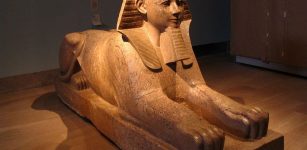 Why Was Pharaoh Hatshepsut’s Reign Virtually Erased From History?
Featured Stories | Nov 9, 2014
Why Was Pharaoh Hatshepsut’s Reign Virtually Erased From History?
Featured Stories | Nov 9, 2014 -
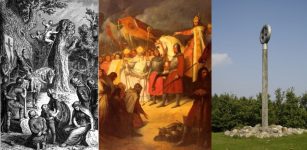 Irminsul – Mysterious Sacred Symbol Of The Saxons – Is It Linked To Yggdrasil And God Odin?
Ancient Symbols | Feb 11, 2019
Irminsul – Mysterious Sacred Symbol Of The Saxons – Is It Linked To Yggdrasil And God Odin?
Ancient Symbols | Feb 11, 2019 -
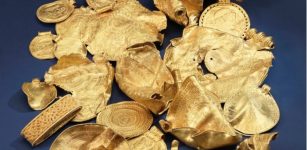 Vindelev Treasure – Surprising Evidence Of Nordic Connection With The European Iron Age Elite
Archaeology | Apr 9, 2024
Vindelev Treasure – Surprising Evidence Of Nordic Connection With The European Iron Age Elite
Archaeology | Apr 9, 2024 -
 3,000-Year-Old Stone Scarab Seal Depicting A Pharaoh Discovered In Israel
Archaeology | Dec 2, 2022
3,000-Year-Old Stone Scarab Seal Depicting A Pharaoh Discovered In Israel
Archaeology | Dec 2, 2022 -
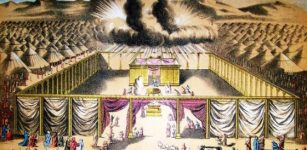 Intriguing Discovery Could Offer Proof Of The Tabernacle – Has The Dwelling Place Of God Been Located?
Archaeology | Nov 9, 2013
Intriguing Discovery Could Offer Proof Of The Tabernacle – Has The Dwelling Place Of God Been Located?
Archaeology | Nov 9, 2013 -
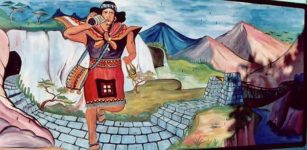 Inca Communication: Mailmen Of The Inca Empire Were Fast Roadrunners
Ancient History Facts | Mar 20, 2016
Inca Communication: Mailmen Of The Inca Empire Were Fast Roadrunners
Ancient History Facts | Mar 20, 2016 -
 On This Day In History: Sir Thomas Brisbane, Astronomer, Soldier And Governor Was Born – On July 23, 1773
News | Jul 23, 2016
On This Day In History: Sir Thomas Brisbane, Astronomer, Soldier And Governor Was Born – On July 23, 1773
News | Jul 23, 2016 -
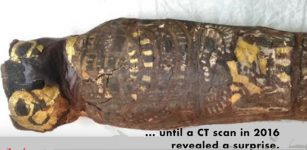 Micro-CT Scans Revealed: It Wasn’t Egyptians’ Falcon-Headed Deity But Malformed Human Baby
Archaeology | Jun 2, 2018
Micro-CT Scans Revealed: It Wasn’t Egyptians’ Falcon-Headed Deity But Malformed Human Baby
Archaeology | Jun 2, 2018 -
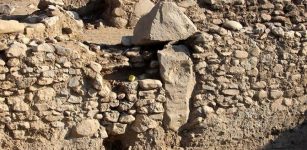 8,000-Year-Old T-Shaped, Four-Sided Structure With Pyramidion – Uncovered in Turkey
Archaeology | Nov 23, 2019
8,000-Year-Old T-Shaped, Four-Sided Structure With Pyramidion – Uncovered in Turkey
Archaeology | Nov 23, 2019 -
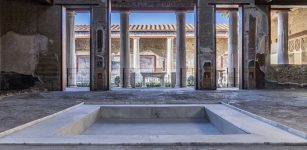 Look Inside A Restored Pompeii House – A Unique Glimpse Into Life In Italy’s Ancient City
Archaeology | Jan 11, 2023
Look Inside A Restored Pompeii House – A Unique Glimpse Into Life In Italy’s Ancient City
Archaeology | Jan 11, 2023 -
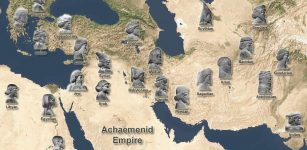 Achaemenid Empire Was The World’s Largest Ancient Empire
Ancient History Facts | Mar 26, 2016
Achaemenid Empire Was The World’s Largest Ancient Empire
Ancient History Facts | Mar 26, 2016 -
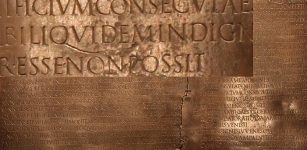 Roman Square Capitals: Prestigious Script That Delighted Human Eye With Its Elegance
Featured Stories | Sep 16, 2019
Roman Square Capitals: Prestigious Script That Delighted Human Eye With Its Elegance
Featured Stories | Sep 16, 2019 -
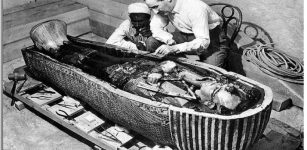 On This Day In History: King Tut’s Tomb Is Unsealed And Opened – On Feb 16,1923
News | Feb 16, 2017
On This Day In History: King Tut’s Tomb Is Unsealed And Opened – On Feb 16,1923
News | Feb 16, 2017 -
 Rock-Hewn Burial Shafts And 38 Symbolic Pots Discovered In Abusir Necropolis, Egypt
Archaeology | Feb 6, 2018
Rock-Hewn Burial Shafts And 38 Symbolic Pots Discovered In Abusir Necropolis, Egypt
Archaeology | Feb 6, 2018 -
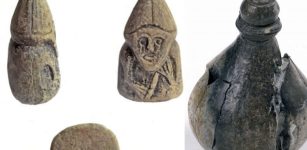 Old Norse Settlers Traded Walrus Ivory With Kyiv – Spectacular Archaeological Finds Reveal
Archaeology | Jun 16, 2022
Old Norse Settlers Traded Walrus Ivory With Kyiv – Spectacular Archaeological Finds Reveal
Archaeology | Jun 16, 2022 -
 Fascinating Virtual Avatar Of Mysterious Egtved Girl Created – What Is Her Story?
Archaeology | Dec 19, 2022
Fascinating Virtual Avatar Of Mysterious Egtved Girl Created – What Is Her Story?
Archaeology | Dec 19, 2022 -
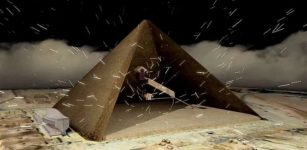 New Cosmic Ray Bombardment Of The Great Pyramid – Search For The Hidden Chamber Continues
Archaeology | Jan 20, 2020
New Cosmic Ray Bombardment Of The Great Pyramid – Search For The Hidden Chamber Continues
Archaeology | Jan 20, 2020 -
 Miraculous Cauldrons Of The Ancient Celtic World
Featured Stories | Apr 17, 2024
Miraculous Cauldrons Of The Ancient Celtic World
Featured Stories | Apr 17, 2024

